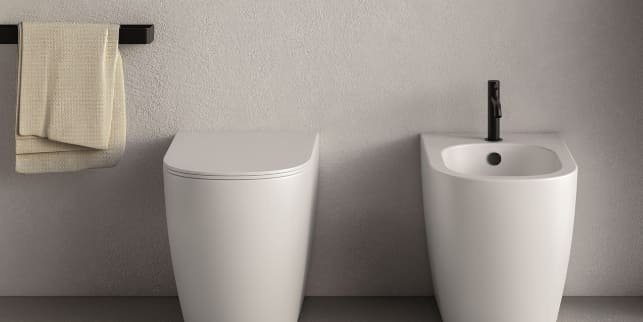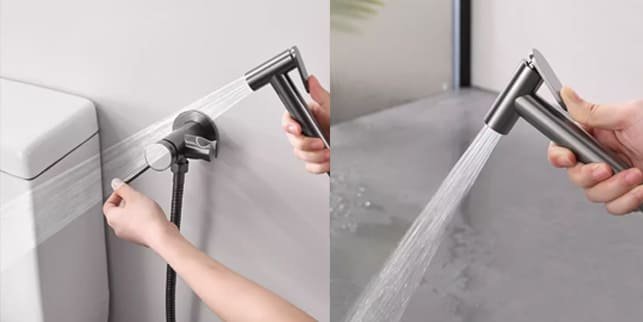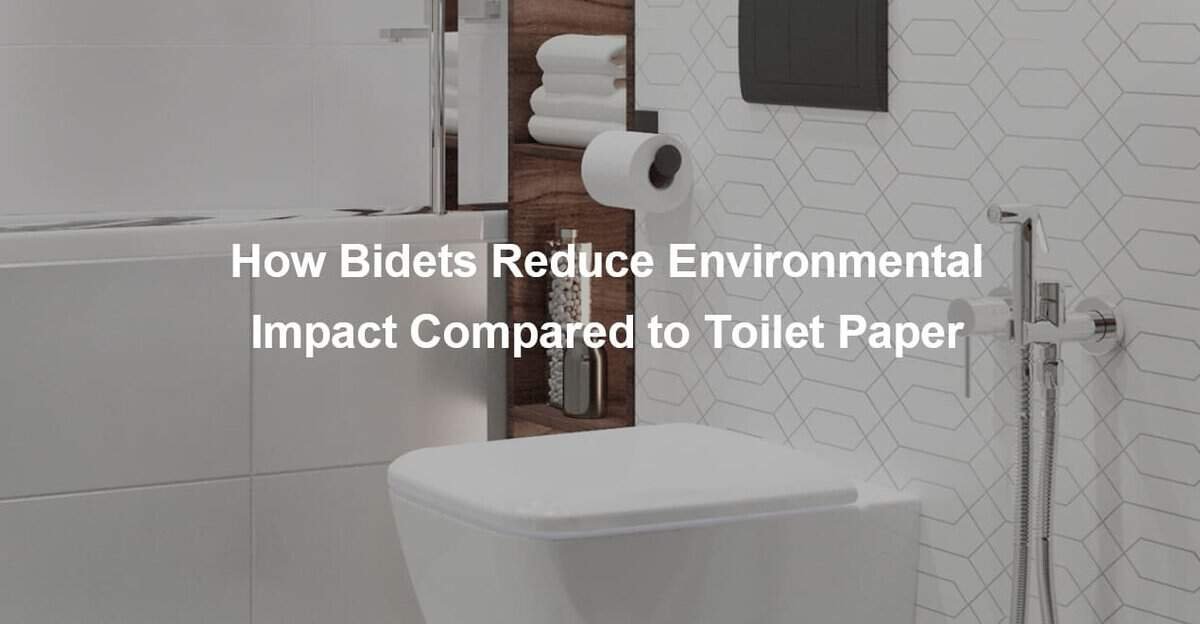Bidets Reduce Environmental Impact Compared to Toilet Paper
To use a bidet or not to clean our butts, that is the question. But let me remind you, this is not an insignificant matter. It’s not just about personal cleanliness but also about caring for the planet. There are repercussions in every little thing we do. So, join us in learning more about how we can contribute to a greener planet with a discussion on the traditional bathroom routines versus spurting water from bidets.
As the world shifts towards more sustainable solutions, whether you prefer toilet paper or a bidet, the environment should always be a priority.
Throughout history, there are local cultural traditions that have shaped people’s bathroom habits. Taboos can hinder discussions about reducing the harmful effects of toileting habits and prevent them from implementing green practices.
We remember how shelves were emptied of toilet paper because people were wired to think that we couldn’t live without them. But in reality, they are replaceable by greener and cleaner options like bidets.
In fact, there was a bidet boom in 2020 with people realizing the very nature, practicality and usefulness of bidet use.

Environmental Impact of Toilet Paper
Deforestation and Habitat Destruction
The Natural Resources Defense Council reports that the average American uses 141 rolls of toilet paper annually, resulting in cutting down of approximately 15 million trees.
This is the most shocking use of trees. The production of toilet paper contributes to logging, which devastates habitats, compacts soils, introduces invasive diseases or parasites, and disrupts nutrient cycles, increasing wildfire risks and often leading to the destruction of old-growth forests. Forests act as carbon sinks, absorbing carbon emissions to prevent their release.
Chemicals and Waste in Production
Toilet paper production involves the use of chemicals, energy, and water, contributing to greenhouse gas emissions and climate change.
The production and disposal of toilet paper also generates waste, including effluent and chemical residue, affecting the environment.
Included in every toilet production are “forever chemicals”, such as PFAS that can be harmful to human reproductive, immune, and cognitive functions.
Waste generation and landfill issues
The production of toilet paper not only affects forests and water resources but also generates substantial waste. This includes the disposal of used toilet paper and packaging waste. Additionally, the chemicals used in the bleaching and pulping processes of toilet tissue often end up polluting our waterways.
People using unflushable items like toilet paper, tampons, and wet wipes can sometimes make the mistake of throwing them out into the toilet. These fatbergs of materials that get flushed and clog our plumbing and sewage systems can be a pain in the ass. They can cause overflows and contamination that release untreated wastewater into the environment.

How Bidets Work
Bidets are technology and innovation’s answer to the hygienic way of cleaning the genital and anal regions to remove the fecal matter from one’s anus. First appearing in 17th century France, the bidet has undergone significant development. They are commonly viewed as a luxury bathroom feature globally.
Contemporary bidets provide various features, including temperature control, adjustable water pressure, and even heated seats for enhanced comfort. They come in 3 various forms that give consumers a choice such as standalone flush bidets, bidet toilet seats, and attachments that can be added to existing toilets.
Bidet toilets are standalone bathroom fixtures, that are installed beside the toilet. Then, there is the bidet toilet seat with bidet components. They are installed to replace your current toilet seat. Lastly, you have the bidet attachment which is connected to your plumbing. Additionally, a spray nozzle is installed to wash.
Bidets continue to be an essential bathroom fixture in continental Europe, Asia, Middle East, Venezuela and Argentina and continues to be widely used globally. However, it is only now that bidets are slowly gaining ground in North America.
Environmental Benefits of Bidets
Reduced Toilet Paper Usage and Waste
If we are serious about changing lifestyles towards sustainable living, we will be open to new ideas that cut down on costs and practice sustainable bathroom habits.
Using washcloths may not be the usual thing among American households but using bidets coupled with drying with a reusable towel or washcloth after cleaning are eco-friendly bathroom solutions that can slash down the purchase of toilet paper. Bidets are not just for the wealthy, but for anyone who wants to make a positive change.
Lower Water Consumption Compared to the Production of Toilet Paper
There are copious studies that show how much water and energy go into producing these toilet paper products in paper mills than the amount you need to run a bidet. There’s a difference of approximately only an eighth of a gallon that we consume when we use a bidet. Meanwhile, an average American family consumes more than 400 rolls of toilet paper every year with every roll of toilet paper requiring approximately 37 gallons of water to produce.
Decrease in Chemical Usage and Pollution
Conversely, bidets produce clean water and significantly less waste. Once installed, a bidet can last for years without needing replacement. Furthermore, bidets do not contribute to chemical pollution, making them a more environmentally friendly option.

Health and Hygiene Benefits
Toilet paper contains ‘forever chemicals’ due to their persistence in the environment. These are compounds from perfluoroalkyl and polyfluoroalkyl substances (PFAS), commonly known as PFAS and are used in various industrial, commercial, and personal health products because they resist water, stains, and heat.
It’s alarming that these chemicals are associated with serious health issues, such as cancer, and can negatively impact human reproductive, immune, and cognitive functions. Even after being flushed, these PFAs can continue to pollute the water system. Both the recycled paper and non-recycled toilet paper brands contain similar levels of PFAS.
Health and Hygiene Benefits
In terms of personal hygiene, bidets provide a more comprehensive cleaning than toilet paper. This can be especially advantageous for individuals with certain medical conditions or those who are prone to skin irritation and bacterial infections.
Economic Benefits of Bidets
Bidets require an initial investment but can lead to long-term savings by reducing toilet paper usage. Although the upfront cost of a bidet or bidet attachment is higher than that of toilet paper, technological advancements have made them more affordable, though not everyone may be able to afford one.
Installation can vary; installing some models may require professional assistance, while simpler bidet attachments might have limitations based on your toilet bowl size and water supply hose access.
Bidets are not difficult to install or maintain, and can be a cost-effective option to save much in the long run.
Cost Analysis and Ease of Use
Comparing the Cost of Bidets and Toilet Paper
Using a bidet can save you money on toilet paper costs, estimated to be around $182 per year. Bidets are a cost-effective way to maintain good hygiene and reduce environmental impact. They are a convenient and easy way to clean yourself after using the toilet.
The simplicity and familiarity of toilet paper continue to appeal to many. Toilet paper is a familiar and easy-to-use option, making it convenient for most people to prefer to use. In contrast, bidets, despite their many features, require an adjustment period. But for a better user experience, it is also a good option to enjoy the improvements and innovations in bidet technology.
Conclusion
Bidets undeniably offer advantages across the board: for hygiene, the environment, your plumbing, and your budget.
By opting for a bidet, you enhance your cleanliness with a refreshing and thorough wash while reducing reliance on toilet paper, which helps conserve resources and decrease waste. Additionally, bidets can lead to long-term savings and lessen the strain on your plumbing system. Embracing a bidet is a step towards a more eco-friendly and healthier lifestyle. Consider making the switch today for a greener bathroom routine or sustainable toilet paper options, to make a positive impact on the environment and our health.




